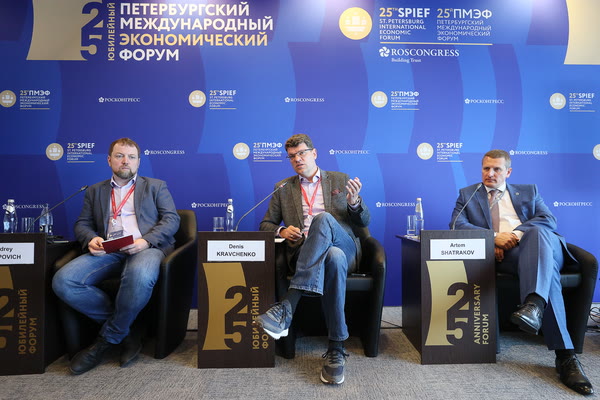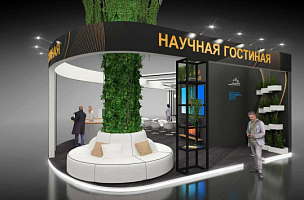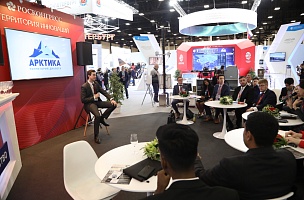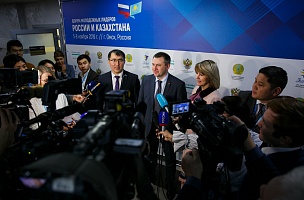Key conclusions
It is not yet clear how best to strike a balance between introducing young people to the process and working to attain a specific result
“We need to strike a balance. There is one main discussion we have in terms of the youth design bureaus initiative. On the one hand, we have the universities. They claim the main thing to be getting young people doing things, getting involved, and finding out about things – about different processes. On the other hand, we have the corporations. They say that the result is what matters to them, and that they can’t do things some other way. They say that they can place an order, but it can’t all be about spending time in a shared space, exchanging ideas about something or another. They need a result, a product, a solution,” Denis Kravchenko, Deputy Chairman of the Committee of the State Duma of the Federal Assembly of the Russian Federation on Economic Policy.
“As a corporation, as part of the industrial sector, as industry specialists, we are naturally interested in making sure that what these young people are doing is as close to reality as possible, and that there’s either an actual or potential customer,” Vasiliy Boytsov, Deputy General Director for Innovative and Technical Development, United Shipbuilding Corporation.
As well as supporting the development of professional teams, youth design bureaus will also aid in efforts to replace imports with domestic alternatives and to attain technological independence
“For every complex systemic project, we need to create an essential bond with teams of young designers. This is key for today’s large-scale engineering construction sector, as we aim to replace imports, achieve technological independence, and create products. <...> Then we will have the potential, and in a few years will have developed new teams providing excellent results,” Andrey Filippovich, Head of the Artificial Intelligence Laboratory, Moscow Polytechnic University.
Now is the ideal time for young and talented people to show what they’re capable of
“This is a time for creating. And this is a situation – a moment – in which we can give young and talented people the chance to show what they’re capable of,” Denis Kravchenko, Deputy Chairman of the Committee of the State Duma of the Federal Assembly of the Russian Federation on Economic Policy.
PROBLEMS
A shortage of specialists and teachers across various fields
“Recruiting specialists is a major problem for employers today. <...> Education in engineering and technology is again on the rise, but we would like there to be more competition and more graduates in these subjects,” Denis Kravchenko, Deputy Chairman of the Committee of the State Duma of the Federal Assembly of the Russian Federation on Economic Policy.
“There is a real need in the IT sector. Companies come and say, <...> ‘Give us mid-level specialists, give us people who will make ground-breaking products. Give us some top-notch engineers and other specialists.’ But you need professionals to train people up to that level. Here’s a statistic: there are 500,000 IT students requiring 40,000 teachers. Even if you take the minimum as required by the AGM, that’s more than 15,000 IT specialists on quarter time teaching across the country. The industry would struggle to provide so many people and so much time. So, if the industry can’t part with these people, then a new cohort needs to be fostered,” Andrey Filippovich, Head of the Artificial Intelligence Laboratory, Moscow Polytechnic University.
Classified data and commercial secrets may hinder efforts to establish youth design bureaus on a large scale
“When it comes to military hardware, I see some major barriers to the establishment of youth design bureaus. That’s because unlike the production stage, where there are virtually no secrets – it just involves regular technological processes – the development stage is above all a matter of secrecy,” Artem Shatrakov, Director of Civil Products Development Department, Almaz-Antey.
Young specialists may not be sufficiently qualified to tackle certain business tasks within an acceptable timeframe
“University design bureaus could probably be engaged in the development of civilian products for companies such as ours. However, there is again a clear limit as far as this is concerned. We are not tackling textbook problems; we are tackling specific business-related tasks. Our experience with Gazprom is one such example. They give us very clear deadlines to deliver the products in question to them. And if it transpired that for whatever reason, our team of young specialists were insufficiently qualified to meet these deadlines, we would look pretty silly in front of our customer, to put it mildly,” Artem Shatrakov, Director of Civil Products Development Department, Almaz-Antey.
“Could such a youth design bureau work in isolation, so to speak, from the actual production side of things? In my opinion, no. That’s because marketing, development, and production are invariably very closely interconnected in the civilian products sector. You can’t just develop a product which you’re then unable to sell to anyone. <...> Any company that understands this has marketing resources. At Almaz-Antey we have an incredibly strong team of marketing specialists who in fact determine some of the technical specifications in relation to a civilian product. And of course, a designer – a constructor – cannot work in some sort of a vacuum. From the outset, they need to immediately design the product with an eye to the specific production capabilities of the place where this item will be produced,” Artem Shatrakov, Director of Civil Products Development Department, Almaz-Antey.
“In terms of youth design bureaus, my first suggestion would be that for all their potential, a little flexibility is required. It’s one thing to have them at universities and educational institutions. <...> However, they are unlikely to immediately win large or important contracts. That said, I think that they will be offered the chance to practice on promising developments and, let’s say, riskier orders,” Alexander Zazhigalkin, Deputy Director, Centre for Innovative Development, Branch of Russian Railways.
SOLUTIONS
Given the limited time spent in higher education, it is essential to make it as subject- and employer-focused as possible
“We have young, motivated people studying today. We cannot waste any time. We think like employers when it comes to standard programmes taught in universities. <...> Our objective right now is to make the higher education system as subject- and employer-focused as possible. We are therefore endeavouring to get leading universities to offer practical assignments and company placements from the third and fourth years of study. <...> We want a dual model to be in place,” Denis Kravchenko, Deputy Chairman of the Committee of the State Duma of the Federal Assembly of the Russian Federation on Economic Policy.
The educational process can be optimized with the help of youth design bureaus
“Another key point is that the general vocational education sector will never train the required number of highly specialized professionals for a particular field. So, youth design bureaus could somehow join forces with the further professional education sector to provide an added element in terms of education and retraining. <...> These two branches, which many higher education institutions are focusing on, could help enact an effective practical-based shift in terms of work going forward,” Alexander Zazhigalkin, Deputy Director, Centre for Innovative Development, Branch of Russian Railways.
“A government order is being drawn up, including in relation to developing IT. <...> But where are the universities in all this? It would be good if these design bureaus were involved in these projects. We make new products to replace imports. Let’s make it so that each university with an IT or other area of focus is assigned to some area of development. It would then be their role to improve and cultivate it. Then, we’d be able to develop teams of people capable of both teaching and designing,” Andrey Filippovich, Head of the Artificial Intelligence Laboratory, Moscow Polytechnic University.
“I completely understand that for many professions today, there first of all needs to be a correlation – a combination – of remote and on-site learning. Youth design bureaus provide places to pursue projects and learn at the same time. And then there’s what I call further education programmes. These can and should involve a practical element. So, my proposal is for youth design bureaus to offer decent practical opportunities, but also to combine this practical element with opportunities to further boost young engineers’ qualifications,” Alexander Zazhigalkin, Deputy Director, Centre for Innovative Development, Branch of Russian Railways.
The establishment of youth design bureaus could serve to ensure continuity between generations of specialists
“Young employees are able to adapt to new technology very quickly. However, at the same time, as youth design bureaus tackle a particular task, they need to borrow and adopt the values of more experienced workers through mentorship. Everything needs to be perceived as an aspect of training, so as to avoid any generational discord between workers within one production system,” Dmitry Shishkin, Director, Administrative Department, Roscosmos State Corporation.






